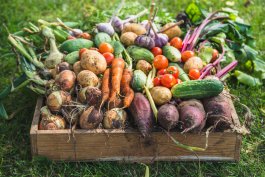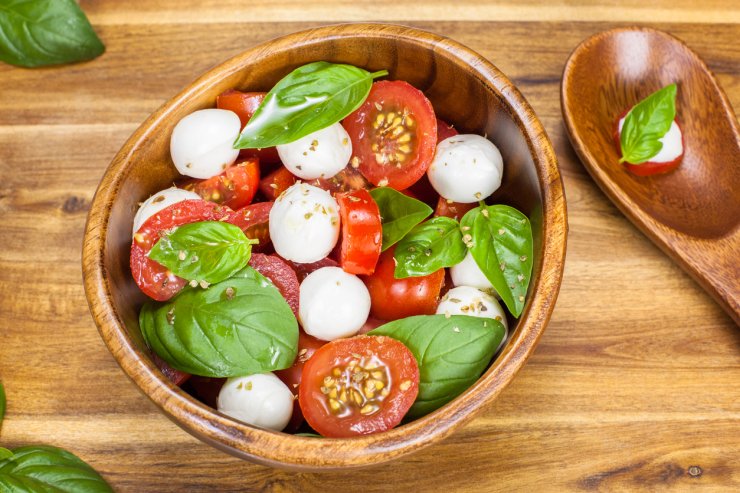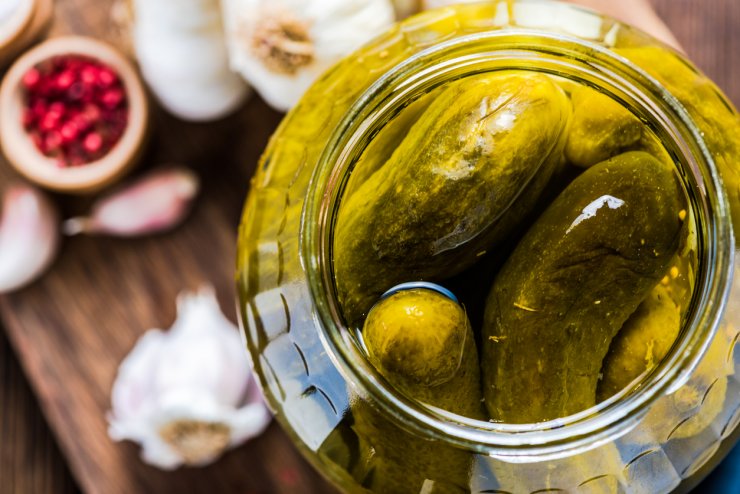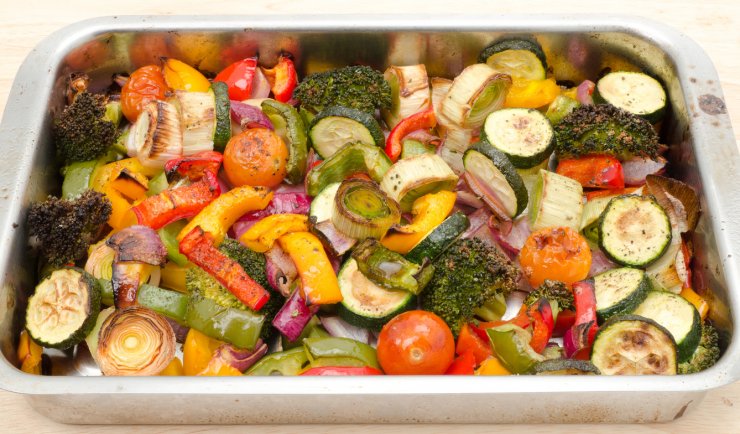
Winter is the season of garden planning, and once the holidays are over, I like to sit down and dream about what my garden will look like in the spring and get a head start on my gardening wishlist. It’s a good time to think about what you like to eat from your garden all summer and plan accordingly. Let me show you how to plant a food garden according to what you actually like to eat, not just what looks pretty in the garden!
When you first start gardening, it’s easy to plant one of everything and see what happens, and honestly I did that for years. It’s not actually a bad approach for a beginner because it gives you the lay of the land, and you can only truly learn a lot about growing a food garden by getting in the weeds and growing whatever you fancy.
That said, I’ve spent many summers with a bunch of vegetables that I didn’t even like just because I thought they would be fun to grow, or because they were easy to grow, or because I heard you could get a big harvest from them. The thing is, if you’re not growing the types of veggies you like to eat, what’s the point? Your compost and your neighbors can only take so much zucchini!
How to Plant a Food Garden That Serves Up Five Great Recipes
Below are a number of my favorite garden recipes for inspiration, and I invite you to think about what makes up some of your summer garden-to-table dishes and create a food garden that revolves around it.

Tomato Caprese Salad
Tomato Caprese Salad
A simple salad of tomatoes, mozzarella, and basil is the ultimate delicacy of summer when tomatoes are sun-ripened and sweet. Here’s a great, simple recipe for Tomato Basil Mozzarella Salad. The bonus is that basil and tomatoes are companion plants, so planting them together is great for both of them! If you love making tomato soup and tomato sauce, add some white onions and thyme into your garden (and stick to the plum tomatoes).
What you’ll need to plant:
- Sweet basil
- Plum tomatoes or heirloom varieties like Caspian Pink or Cherokee Purple. If you need an easy one, Early Girls are simple, easy to grow, and taste great!

Pickled gherkins
Pickles
If you love pickles, you can grow just about everything except the salt in your garden! Here’s a simple Quick Pickled Cucumbers recipe.
What you’ll need to plant:
- Cucumber varieties, such as the Bush Pickle, or Boston Pickling Cucumber
- Any type of garlic
- Dill, preferably the Bouquet varietal if you have space, or Compatto if you have a patio garden
- Mustard greens, for the mustard seeds
- Shallots (optional)

Roasted potato wedges
Home Fries
Once potatoes are ready, it’s hard to stop yourself from making home fries a few mornings a week, and no recipe is necessary—you can just make it with your heart! Below are the ingredients you can plant to toss together in a hot cast iron skillet with oil and butter on Sunday mornings for ultimate flavor. You can also make potato salad with these ingredients.
What you’ll need to plant:
- Russet potatoes, which cook best in a skillet due to their high starch content
- Sweet potatoes, like the disease-tolerant Beauregard
- White onions, like White Grano, Candy, or Patterson
- Garlic, any variety will do, but Georgian Fire varietal or a strong Red Donetsk varietal are great
- Thyme
- Rosemary

Mixed Roasted Veggies (Summer)
Mixed Veggies for Summer and Winter
Another tip for coming up with ideas on how to plant a food garden is to come up with a go-to recipe for mixed veggies all year long that you can put together as a quick and easy side dish. Here are two simple combinations that you can drizzle with salt, pepper, and olive oil, and bake at 400 degrees F until tender.
Mixed Roasted Veggies (Summer):
- Yellow squash
- Zucchini squash
- Garlic, any varietal will do, both bulb and scapes
- Red onions
- Bell peppers
- Broccoli
- Asparagus
- Thyme
- Basil
- Oregano

Mixed Roasted Veggies (Winter)
Mixed Roasted Veggies (Winter)
- Russet potatoes
- Sweet potatoes
- Carrots
- Parsnips
- Honeynut or butternut squash
- Delicata squash
- White onions, like White Grano, Candy, or Patterson
- Garlic, any varietal will do
- Thyme
- Rosemary
- Sage
Depending on your palate, your ideal food gardening plan could be totally different from what I’ve listed above, or it could be exactly the same! To create a productive food garden that you’re driven to take the best care of, simply plant all of your favorite things to eat and cook with, then enjoy your bounty!
What are your favorite recipe ingredients to grow in your garden? Share your favorite garden-grown dishes in the comments!


 Previous
Previous


Organizing your garden with compatibles and rotating crops is important plus soil prep over the fall and winter. Those are so valuable I can’t emphasize it enough. I get a truck load of horse manure, mix it in with ground up leaves and compost (a full years worth) and till into the soil. It ensures me a great crop of vegetables. I also use seed saver seeds as they are non gmo. Then….comes the fun of planting what vegetables you love that grow well in your zone.
One year, I had so much summer squash. I found a recipe for hot dog relish using zucchini and made a few jars of it. Thankfully it used up a lot of squash! It was so much better than the store bought stuff made with cucumbers and far too much sugar. I was sad when it ran out, and I had a few bad seasons with the squashes. I need to get more paintbrushes and play bee this year.
I don’t think it’s as straight forward as just planting what you like to eat. For example, ideally I want to grow zucchini, squash, tomato and runner beans. But how should you rotate these crops around the garden to ensure good nutrients for each family and avoiding pests and disease like late blight? It seems that introducing other families of crops into a rotation is important, but I don’t want to grow roots, or brassicas. On top of that, I have a smallish garden, so I don’t have that space to grow those families just for the sake of rotation.
Both Candy and Patterson onions mentioned in the article are yellow onions, not white as described.